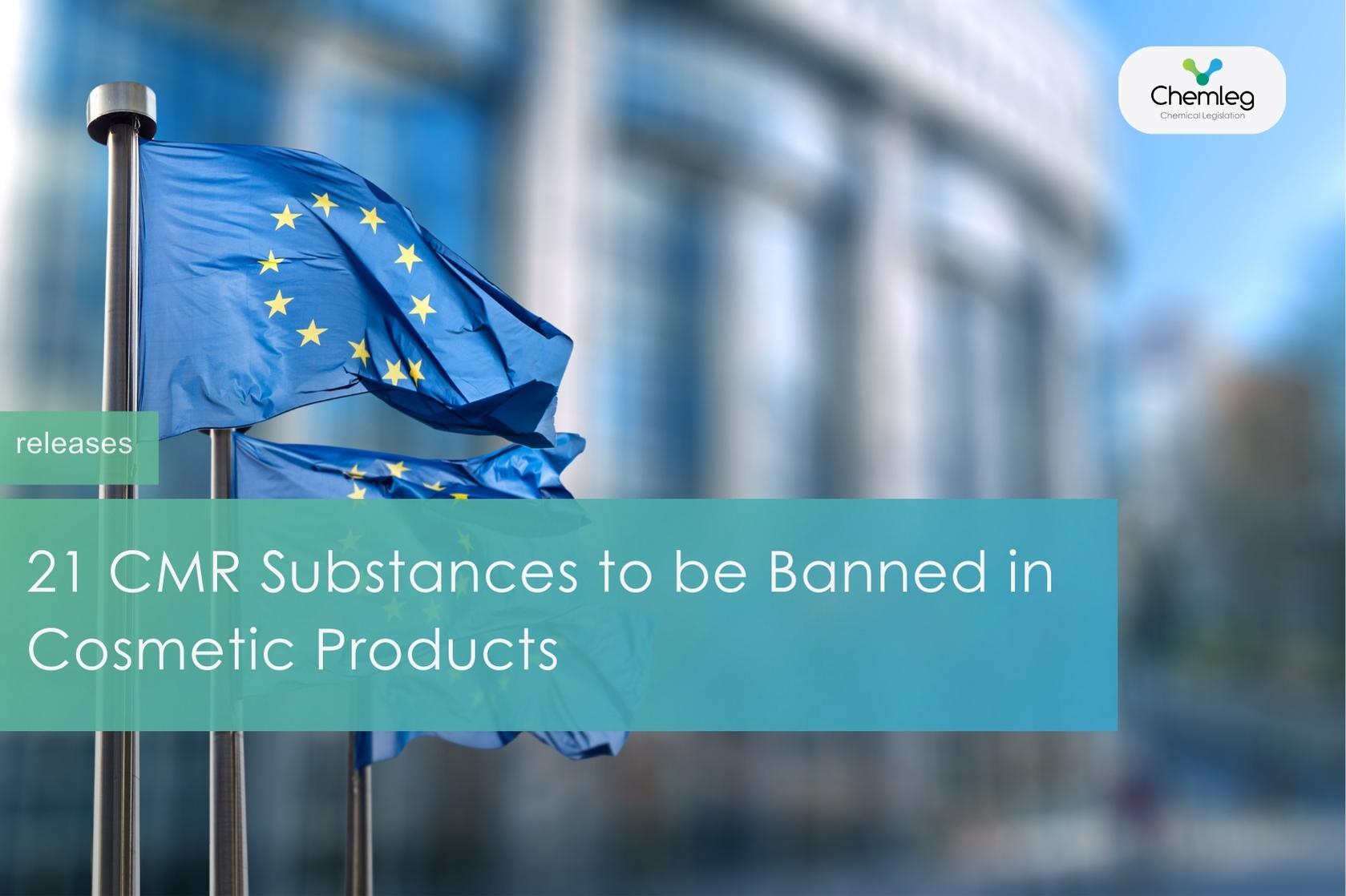
21 CMR Substances to Be Banned in Cosmetic Products Starting September 1, 2025
21 CMR Substances Will Be Banned in Cosmetic Products Starting September 1, 2025
On June 24, 2024, the European Commission notified the World Trade Organization (WTO) of a draft regulation concerning the use of certain CMR substances in cosmetic products. This draft is Omnibus Law VII, which aims to implement Commission Regulation (EU) 2024/197, amending the EU Cosmetics Regulation to include newly classified CMR substances in the EU CLP Regulation.
The draft is currently open for comments until August 23, 2024, and is planned to come into effect on September 1, 2025.
Omnibus Law VII will be effective from September 1, 2025, with no distinction between placing on the market and making available on the market. This means that non-compliant cosmetics can no longer be sold in the EU market from the application date and must be recalled before this date.
The EU Cosmetics Regulation will see 23 changes in its annexes, including:
- Annex II: 1 revised banned ingredient and 21 newly banned ingredients.
- Annex III: 1 restricted ingredient removed.
Which Substances Are Being Banned?
The following substances will be added to Annex II, the list of substances prohibited in cosmetic products:
- diphenyl(2,4,6-trimethylbenzoyl)phosphine oxide (currently restricted under Annex III)
- 2,2′,6,6′-tetrabromo-4,4′-isopropylidenediphenol; tetrabromobisphenol-A
- transfluthrin (ISO); 2,3,5,6-tetrafluorobenzyl (1R,3S)-3-(2,2-dichlorovinyl)-2,2- dimethylcyclopropanecarboxylate
- clothianidin (ISO); (E)-1-(2-chloro-1,3-thiazol-5- ylmethyl)-3-methyl-2-nitroguanidine
- benzyl(diethylamino)diphenylphosphonium 4- [1,1,1,3,3,3-hexafluoro-2-(4- hydroxyphenyl)propan-2-yl]phenolate
- benzyltriphenylphosphonium, salt with 4,4′- [2,2,2-trifluoro-1- (trifluoromethyl)ethylidene]bis[phenol] (1:1)
- reaction mass of 4,4′-[2,2,2-trifluoro-1- (trifluoromethyl)ethylidene]diphenol and benzyl(diethylamino)diphenylphosphonium 4- [1,1,1,3,3,3-hexafluoro-2-(4- hydroxyphenyl)propan-2-yl]phenolate (1:1)
- reaction mass of 4,4′-[2,2,2-trifluoro-1- (trifluoromethyl)ethylidene]diphenol and benzyltriphenylphosphonium, salt with 4,4′- [2,2,2-trifluoro-1- (trifluoromethyl)ethylidene]bis[phenol] (1:1)
- dimethyl propylphosphonate
- dibutyltin maleate
- dibutyltin oxide
- reaction mass of 1-(2,3-epoxypropoxy)-2,2-bis ((2,3-epoxypropoxy)methyl) butane and 1-(2,3- epoxypropoxy)-2-((2,3-epoxypropoxy)methyl)-2- hydroxymethyl butane
- 4,4′-[2,2,2-trifluoro-1- (trifluoromethyl)ethylidene]diphenol; bisphenol AF
- benfluralin (ISO); N-butyl-N-ethyl-α,α,αtrifluoro-2,6-dinitro-p-toluidin
- N,N-dimethyl-p-toluidine
- 1,4-Benzenediamine, N,N’-mixed Ph and tolyl derivs
- 4-nitrosomorpholine
- difenoconazole (ISO); 1-({2-[2-chloro-4-(4- chlorophenoxy)phenyl]-4-methyl-1,3-dioxolan-2- yl}methyl)-1H-1,2,4-triazole; 3-chloro-4- [(2RS,4RS;2RS,4SR)-4-methyl-2-(1H-1,2,4- triazol-1-ylmethyl)-1,3-dioxolan-2-yl]phenyl 4- chlorophenyl ether
- 4-methylimidazole
- 3,3′-dimethylbiphenyl-4,4′-diyl diisocyanate
- foramsulfuron (ISO); 2-{[(4,6- dimethoxypyrimidin-2-yl)carbamoyl]sulfamoyl}- 4-formamido-N,N-dimethylbenzamide; 1-(4,6- dimethoxypyrimidin-2-yl)-3-(2- dimethylcarbamoyl-5- formamidophenylsulfonyl)urea
- (2E)-2-cyano-N-[(ethylamino)carbonyl]-2- (methoxyimino)acetamide
The industry has not yet made any comments or requests regarding the exceptional use of these substances in cosmetic products.
What to Do Now?
Even though this is just a draft, it is time to take action as both Omnibus Law VII and Commission Regulation (EU) 2024/197 will be in force without exception from the same date.
Cosmetic manufacturers and importers should check if any of their products contain the listed substances. If so, necessary steps must be taken for reformulation and compliance, including an updated safety assessment report and CPNP notification.
Since Turkish Cosmetic Regulations are aligned with the EU, similar steps will soon be taken in Turkey, and proactive planning is essential.
References:
- WTO. (2024). Draft Commission Regulation amending Regulation (EC) No 1223/2009 of the European Parliament and of the Council as regards the use in cosmetic products of certain substances classified as carcinogenic, mutagenic, or toxic for reproduction. Retrieved on 24/06/2024
- WTO. (2024). Draft Annex to the Commission Regulation amending Regulation (EC) No 1223/2009 of the European Parliament and of the Council as regards the use in cosmetics products of certain substances classified as carcinogenic, mutagenic, or toxic for reproduction. Retrieved on 24/06/2024
